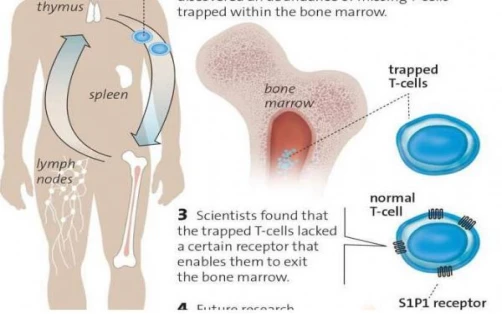Study to track missing T cells in the body of patients with glioblastoma

Study to track missing T cells in the body of patients with glioblastoma

Copyright © iCell Bioscience Inc, Shanghai 2018-2019
Glioblastoma produces an unusual effect on the body's immune system, which usually leads to a sharp decline in the number of circulating T cells in the body, and this T cell can help drive the body's immune defense mechanisms. Even though more and more immunotherapies are currently being used to stimulate the body's natural defenses against tumors, researchers are still unclear about the precise location of these T cells.
Recently, a research report published in the international journal Nature Medicine, researchers from the Duke University Medical Center successfully completed the tracking of missing T cells in the body of patients with glioblastoma, found in the bone marrow. A large number of circulating T cells, but these T cells are locked out and do not function properly because brain stimulation is caused by a process that responds to glioblastoma or other metastatic tumors in the brain.

The results may open up a new field of research for researchers to develop complementary anticancer drugs, allowing locked T cells to be released from the bone marrow to help the body resist tumor progression. The problem with all immunotherapies is that the immune system is targeted as a target, especially in glioblastomas, other tumors that spread to the brain, if our goal is to activate T cells, and T cells are not at the target. If you point, then this treatment does not seem to work.
In this study, the researchers wanted to find missing T cells and found that many newly diagnosed glioblastoma patients had the same immune system as patients with Full-blown AIDS, even with surgery and chemotherapy. The same is true before radiotherapy; the number of CD4 helper T cells in most patients can reach 700-1000, while the number of CD4 helper T cells in a large number of untreated glioblastoma patients is less than 200, which may be It will make patients more susceptible to a variety of infections, and even lead to the deterioration of cancer in the body.
Initially, the researchers found missing T cells in the patient's spleen, but in some disease states, this seems to be a pathological cell, but because the spleen is very small, the researchers decided to check the bone marrow to see if Traces of T cells can be found, and these T cells are finally discovered.
When the researchers examined these hidden T cells, we found that the surface of these T cells lacked a receptor called S1P1, which helps cells leave the bone marrow and lymphatic system. When the receptor is deleted, these T The cells are locked and unable to circulate in the body to help the body fight off diseases such as infections and cancer.
The researchers now want to clarify how the brain induces S1P1 receptor abnormalities through more in-depth research. The S1P1 receptor receives some signal indications and withdraws from the cell surface to the inside of the cell; when the researchers restore the S1P1 of T cells in the mouse body. At the receptor, T cells leave the bone marrow to the tumor site, so the process is reversible.
Researchers hope to develop specific molecules to restore the function of the S1P1 receptor on the surface of T cells, which may also promote immunotherapy to treat cancer patients more effectively.
 Loading ....
Loading ....
